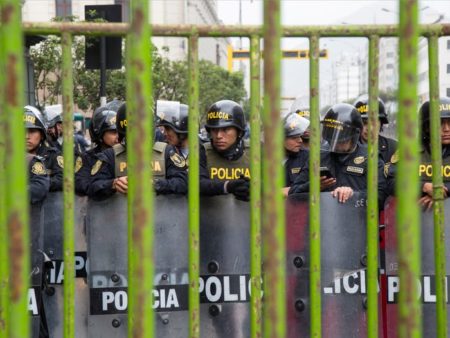November 18, 2019 – In the past few months protests have broken out in the following countries listed alphabetically: Algeria, Bolivia, Brazil, Chile, Colombia, The Czech Republic, Egypt, France, Guinea, Haiti, Honduras, Hong Kong, Indonesia, Iran, Iraq, Kazakhstan, Lebanon, Libya, Madagascar, The Netherlands, Pakistan, Peru, Spain (Catalonia), Syria, The United Kingdom and Venezuela.
I’m sure I’ve left out a few. For example, I didn’t mention the United States where growing opposition to Donald Trump’s presidency is bringing out protestors regularly.
Nor have I mentioned the youth climate crisis strikes initiated by Greta Thunberg, the Swedish teenager who has galvanized teenagers and their supporters around the world to hold governments and industry polluters to account by quitting the classroom every Friday in many countries around the globe.
So it would seem to protest the government these days is becoming pretty commonplace. Why are they on the rise? Because of:
- autocratic governments
- economic discontent and inequality with the 1% garnering more wealth than the 99% below.
- educational costs and inequality of opportunity
- electoral fraud
- environmental issues
- gender persecution and intolerance
- international financing and controls
- official corruption
- people power
- precarious employment in the gig economy
- press freedom and the integrity of journalism as a force for democracy
- religious persecution and intolerance
- separatist movements
- social inequality
- unfair and regressive taxation
- unjust laws
- wars
Again, I am sure I have left numerous other reasons out. But it is increasingly clear that many in our human society feel powerless in the face of governments that appear to not be listening, that fail to act on important issues and that continue to support the existing status quo.
In democracies where we can exercise the ballot every two, four or five years, for many it is deemed not soon enough when governments are perceived to have stopped listening. Social media provides one tool for a populace to express dissenting positions from the government of the day. But as a method of impressing upon government the need for change, social media seems to be doing little with one exception. Where social media has succeeded is as the communication and organizational medium for street protests. Through social media, protests involving crowds of 10 can quickly become tens of thousands. A good example is the influence of social media on North Africa and the Middle East during the Arab Spring of 2010 when the protest of one person who through self-immolation in Tunisia led to the overthrow of dictators right across North Africa and the Middle East.
The protests we are seeing today have at their root one commonality, shared angst and a sense of powerlessness in the face of government overreach. On the street, the solidarity in numbers diminishes fear of government power while the Internet becomes the means by which movements of protest are sustained and popularized.
In a recent article in The Economist, it states, “Probably not since the wave of ‘people power’ movements swept Asian and east European countries in the late 1980s and early 1990s has the world experienced such a simultaneous outpouring of popular anger on the streets.” The difference today, however, is how many of the current protests are specific to parochial grievances whether it is a sudden rise in gasoline and diesel taxes, or an attempt to create extradition processes that diminish the rights of local citizens to remain subject to their national rule of law.
The vast majority of those on the streets in the past, just as it is today are young. But lately protesting has become a multi-generational thing from pro and anti Brexiters from every age group in the United Kingdom, to teachers and parents joining students in climate strike marches and demonstrations.
What we are seeing today is but a harbinger of what is likely to come over the next ten years and beyond. Why? Because of one overwhelming issue, the climate crisis and the upheavals that scientists are predicting. From freshwater scarcity to food security, extreme weather events, rising sea levels, drought, and searing heat, the climate crisis if it has not already, will bring more people into the streets. And what will make these protests different from those that have preceded them is the unifying nature of the common issue. All humanity will be impacted. People of all ages, from different economic and social circumstances, of every religious persuasion and national identity, will be out on the street demanding from their governments, global cooperation, and global solutions.
















